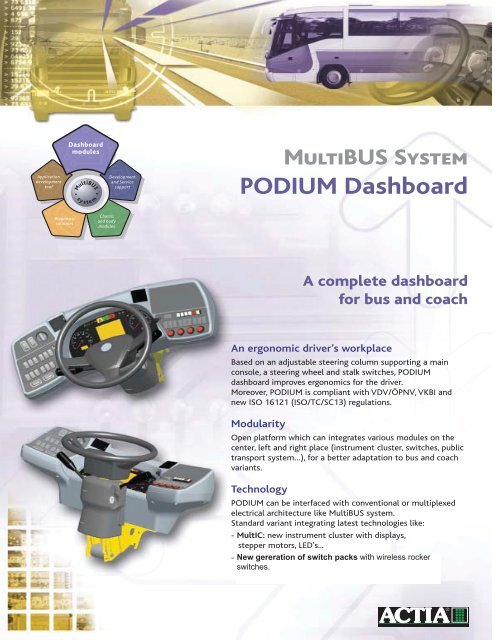
Is part of the ACTIA Group, an international group (based in Toulouse, France) that specializes in adding value to its customers by providing innovative machine/vehicle/vessel electronics and diagnostics solutions. As a group ACTIA is known for reliability, quality, and performance across multiple OEMs serving multiple markets. ACTIA Corporation’s wide-ranging experience in. The California Code of Regulations (CCR), is the official compilation and publication of the regulations adopted, amended or repealed by state agencies pursuant to the Administrative Procedure Act (APA). Properly adopted regulations that have been filed with the Secretary of State have the force of law.
Actia Out Of Regulation 2016
Type-approval is the official recognition given by a national authority or agency which certifies that a vehicle or component conforms to prevailing technical specifications or regulations. Before the product can be put on the market and before reaching the hands of the end-user the manufacturer must complete its type-approval procedure,also referred to as “homologation” in Europe, and be certified by third-party verification that design and construction respect the pescriptions stipulated.
In Italy, this role is takenby the Ministry of Transport and the Motor Vehicle Trial Centers (CPA). Moreover, the manufacturer guarantees conformity with type-approval demonstrating to the agency that original characteristics are maintained throughout production in series. Historically, type-approval arose for the regulation ofall motor vehicles in circulation, not only automobiles, trucks and motorcycles but also tractors, trailers and other agricultural machinery. Aside from complete motor vehicles, type approval also applies to components and systems essential for their operation such as engines and brake and steering assemblies, tow hitches and, in the case of tractors, ROPS, Rollover Protection Structures.Past, present and future, what has changedUp until a few decades ago type-approval was managed independently by the each of the European states with their own methods and procedures but then the market and those on the market felt the need, correctly so, for uniform and unified type-approval, at least at the EU level. Thus Europe began writing its own regulation in the form of EU Directives which slowly became more sophisticated and complicated with the technical evolution of motor vehicles, beginning with automobiles and then expanded to bring in agricultural machinery and especially tractors. At present, Framework Directive 2003/37/EC covers type-approval of wheeled agricultural and forestry tractors with maximum speed of 40 km/h. All other “agricultural”type-approvals remains at the discretion and competence of the Member States.

Actia Out Of Regulation System

The new “Mother Regulation”, published in March 2013, sets forth two highly ambitious objectives; one is covering many more machinery types and the other is to regulate type-approval to keep it in step with technological progresswhich is, fortunately, ongoing.Which machines are covered?First, the new regulation applies to all types of tractors independently of their maximum speed (which is not specified) and their traction system; this means it is no longer limited to top speed of 40 km/hr and wheeled tractors but extends also to tracked units. All types come under application and if certified for conformity can all be given type-approval recognized in all the twenty-eight European Union Member States. An importantdistinction must be made, however.
Type-approval regulations concern the product and its manufacturing characteristics but each country maintains the right to regulate circulation in national territory as regards speed limits, weight, size, etc. A concrete example is a tractor with type-approval for 60 km/h whichmust still comply with national or local speed limits in exactly the same way as an automobile, a truck or a motorcycle. It must also be pointed out that Regulation EU 167/2013 deals with type-approval for farm trailers and other towed agricultural machinery such as sprayers, balers and the like. This is totally newin that all interchangeable towed machinery now comes under national regulations which are very diverse and often not compatible with others; it is sufficient to name regulations for drawbar towing eyes and brake assemblies.